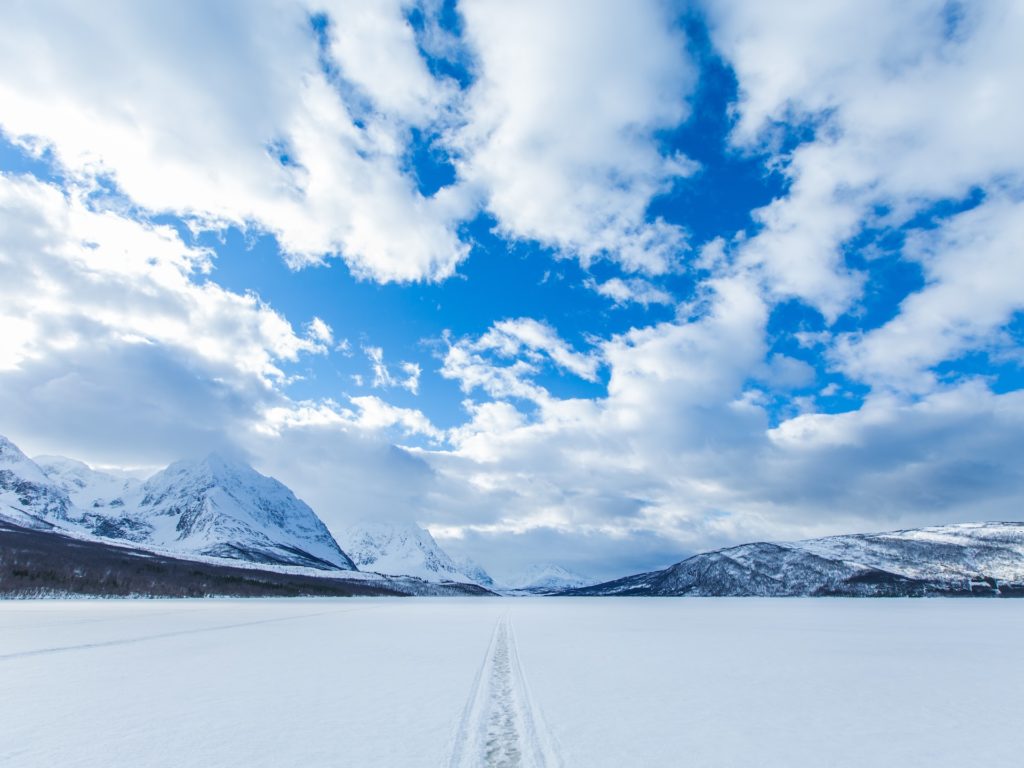Media release from January 12, 2023
Vital winter ice road infrastructure may be cracking and sinking under the load of an unseasonably warm start to the new year across Europe and North America, a trend York University Associate Professor Sapna Sharma and team has detailed in a recent study.

The research warns that ice roads, essential for moving people, food, medicine and fuel in remote northern communities, as well as heavy machinery used by industry, may become unsustainable as the climate warms. This poses significant issues this century.
Will ice road truckers become a thing of the past? That’s a question Sharma, a freshwater expert in York’s Faculty of Science, says could depend on the thickness of ice needed to support the truck and its load. What might be thick enough for snowmobiles, pick-up trucks and skiers, could see ice cracking up under the weight of transport trucks in northern Canada, the United States, Russia and Sweden.
“This balmy weather could have significant impacts on northern communities who rely on those roads and ice for their existence. These communities will be most impacted by our projected change in the duration and thickness of lake ice,” says Sharma. “It would also affect recreational uses, even in more southerly areas. Our warming world is creating conditions where the duration of lake ice is shortening at alarming rates, and even if those lakes still freeze, the ice may not be thick enough for safe use.”
The study’s authors, including fellow lead authors Reader R. Iestyn Woolway of Bangor University, Wales, and Lei Huang, a postdoctoral researcher at Capital Normal University in Beijing, China, used daily lake data from an ensemble of climate model simulations, conducted with a state-of-the-art Earth system model, to look at how the safety of lake ice is changing across the Northern Hemisphere.

Transport trucks need ice roads to be at least one-metre thick. “For these trucks our research shows that the number of days of safe ice will decline by 90 per cent with an increase of 1.5 C of global warming. That moves to 95 per cent with a 2 C increase and 99 per cent with a 3 C global temperature hike,” says Woolway.
When it comes to recreation, the researchers looked at how the winter activity season could be affected. They found safe ice for recreational purposes could decrease by 13, 17 and 24 days with the same 1.5 C, 2 C and 3 C of warming projections, respectively. To hold the weight of a human, the ice needs to be at least 10 cm thick, but previous research by Sharma and team has shown an increase in drownings through winter lake ice affected by warming winters.
The study projects that the most densely populated regions across the Northern Hemisphere will experience the greatest loss of safe lake ice.
“There is a real need for the development and implementation of adaptation plans to address the imminent loss of critical winter ice roads and transportation infrastructure across the Northern Hemisphere,” says Sharma.
The study, Lake Ice Will be Less Safe for Recreation and Transportation Under Future Warming, was published in the journal Earth’s Future.
